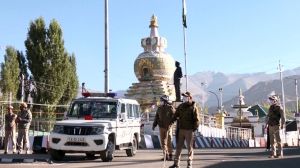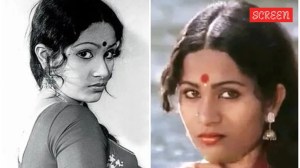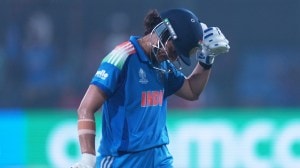The year we hit bull’s eye
And in 2009, let’s carry over the Beijing gold-dust and wait for our players to inspire us again

And in 2009, let’s carry over the Beijing gold-dust and wait for our players to inspire us again
Sit a while with the year that is tiptoeing out this week and think of the good times. What do you see? A monkish man who beat his demons to get the country’s first Olympic gold; a wrestler who got a second chance and rode it to victory, a young badminton player who tripped in Beijing but became the first Indian woman to enter the world Top 10 and the young men from Bhiwani who jabbed their way to cult status. Almost all the good news in this rather blighted year came from sports—that tussle between one player and his craft, one team and its fears. Three Olympic medals, including Abhinav Bindra’s gold, were the high-points. It was also the year when Jeev Milkha Singh dug his heels into the big league greens and Vishwanathan Anand clinched the world title at Bonn. We look back at the winners of the year and what 2009 means to them.
GOLDFINGER
If you weren’t glued to DD Sports that early morning of August 11—and frankly, many weren’t—you’d still have woken up to the flurry of SMSes kicking off celebrations of Bindra’s gold at the Beijing Olympics. Not a bad way to start a Monday morning in the week leading up to Independence Day. Placed fourth going into the final, the 25-year-old started with a 10.7, and finished with 10.8 on the deciding shot, to seal the gold. The excitement back home here in India, whether you comprehended the sport of shooting or not, was infectious.
Looking ahead, the sport will never be the same again. With the standard set firmly in gold, shooters will approach every World Cup with an eye on the top step of the podium. From Rajyavardhan Rathore to Bindra, the average age of the medallist also looks to have gone down. Watch out for Gagan Narang who has shot the perfect score thrice since Olympics in the 10 m air-rifle and Asher Noria who, at 16, surpassed Rathore’s Olympic score. Bindra, meanwhile, has declared he will pick the gun and shoot at an event, exactly when he thinks it right. He is determined, however, to see the victory- tale repeated in coming years, while mentoring other shooters. Which means that the glow shall remain even after the gold-dust settles.
PUNCH-PACKED
There’s no White Christmas without snow. And no complete, good sports literature without boxing. Its literary future in India is getting brighter, but boxing as a sport came into its own in the country this year—Akhil Kumar’s Independence Day victory over world champion Sergey Vodapoyanov in the 54 kg pre-quarters at Beijing was as much a stunner as Vijender Singh’s eventual pocketing of the bronze medal.
Beijing’s success found resonance at December’s World Cup in Moscow when India returned with four bronze medals, but the Olympics was the take-off point for a sport that can only rise higher. In the immediate days after his victory, Vijender, the chocolate-boy boxer, mingled with the swish set and walked ramps for designers, even as his desi gym-cum-ring in Bhiwani, Haryana, got rechristened Little Cuba. The future: some weight-categories might get rejigged over the next four years till the London Games. But as the pugilists re-set their targets, preparation will get far more scientific now that India’s sniffed success at the highest level.
SECOND COMING
Try as you might, repechage doesn’t sit too easily on the tongue (unless you speak French) and it definitely entered any Indians’ spoken-lexicon only on that afternoon when baby-faced, wrestler Sushil Kumar strung together three technically immaculate wins to pick an unexpected bronze medal in the men’s 66 kg freestyle category. You’d be called a sporting ignoramus if that’s not the new word you’ve learnt in 2009.
It’s difficult to gauge this wrestling medal’s impact on urban India, but stay assured, the next time an akhada in Indian interiors of Punjab, Haryana, Himachal or Maharshtra cries hoarse over the shortage of mats to train on, patrons won’t shy off.
But not many had stayed on at the Chinese Agricultural University in Beijing, the venue for wrestling at the Olympics, after the unassuming wrestler from Delhi’s outskirts lost his first round to eventual Ukrainian finalist. Rule-books were then scanned to look for repechage which allowed the Indian a second go at advancing towards the medal after the Ukrainian reached the final. The man himself though, went about his task doggedly and very quietly, flinching just once in the course of the day, when he found his coaching staff and mentor doubling as masseurs as he fought three back-to-back bouts in 75 minutes.
Of all the novelties that the Olympics can present to India (considering India’s strictly a medal-novice) a wrestling medal wasn’t one, since India’s first individual bronze medal after Independence came via the wrestler KD Jadhav. But Sushil Kumar’s medal could be said to have sprung out of the blue since the country’s pehelwaans had almost always struggled to convert their akhada machismo into winning ways at big competitions like the Olympics. Not many beyond his training-mates at Delhi’s Chhatrasal Stadium campus expected him to bring home a medal. Sushil always knew he had a chance though, and more pertinently, the import of repechage.
STAR OF THE GREENS
The two parties can hardly communicate in any common language but Jeev Milkha Singh is often told that he shouldn’t be surprised if his loyal spectators from Tokyo manage to convince their government to grant him Japanese nationality out of sheer affection. Such is the 37-year-old’s connect with Japan, where he regained his confidence and his game after a long lean patch in his comeback year of 2006.
But more than the four titles he’s picked this year, what makes 2008 a stupendous one for Singh is his first Top 10 finish at the PGA Championship, besides the fact that he became the first Indian to play all four major championships. For someone who boldly ventured to play in events abroad at a time when others were only just learning to register their entries on the Asian Tour, this year saw him pick his second Asian Tour’s Order of Merit in three years and a confirmed start in all four Majors next year as well.
The Majors can be likened to tennis’ Grand Slams, and that means that the top golfing events of 2009 will have a sure-shot Indian presence, a figure to root for even as Singh himself aims at more Top 10 finishes. Alongside Shiv Kapur and Jyoti Randhawa, Singh will hope to make an Indian charge towards golf’s biggies, improving on his ranking of 36 in the world.
Singh is a far more confident finisher these days against quality fields, playing the final two rounds as assuredly as the first two, and increasingly less harried in his travelling. His itinerary might still include tournaments spread over various tours, but he has finally seemed to have found the right balance in focus. 2008 saw him far more in control of the events he played and he looks poised for even bigger accolades the next year. Winning the Nippon Series JT Cup in December was poignant as it came within days of his wife Kudrat delivering a stillborn in a Tokyo hospital. But in his fighting resurgence over the last three years, Jeev Milkha Singh, son to the legendary runner, also a strict demanding father, has proven that on his own chosen fairways, he can display equal grit and valour.
SMASH HIT
A year too good to be true, even by the girl’s own admission. And Saina Nehwal’s not done yet as she prepares for an onslught on the All England and the World Championships in 2009—not as a rank outsider, but more a dangerous dark horse who is ready to explode onto the biggest stage, brushing off opponents with her brand of power-shuttle. Suddenly, Top-5 doesn’t look all that far-fetched and India will be tuned in to top-grade badminton more often that earlier, as Nehwal plays against the cream of the badminton world week in, week out. 2009 ,in fact, is greatly anticipated as the men join the party with Chetan Anand, Anup Sridhar, Arvind Bhat, P Kashyap and Anand Pawar—all Top 50 currently—stride ahead with renewed confidence. But Nehwal’s set the tempo.
The 18-year-old spent the whole of 2008 turning around those three-game last-point thrillers in her favour, improving her court mobility and net-play, adding layers of deception while finetuning her essential game based on power. Quarterfinals at the Olympics, a win over the defending world champion, the World Juniors title and an official admission from the world body of her ‘most promising player’ status — the script couldn’t have been written better for a teenager. The Hyderabd shuttler’s also acutely aware – from having gone through a frustrating 2007 — of just how quickly the cookie can crumble. 2008 was dream-like, she says; only Saina Nehwal likes the idea of waking up and hitting the courts even better.
A WISH
The free-fall, though it happened quietly, would’ve been heart-breaking. For someone who grazed the Top 30 mark — she was 27 just last year, Sania Mirza fell out of the 100 over her longest period of absence from the game. But it isn’t the ranking graph that’ll top Mirza’s worries as she plots her way back into some semblance of reckoning, It’ll, in fact, be the way her all-important right wrist responds to commands issued by the mind.
The career-threatening injury to her wrist — and the subsequent surgery and recuperation — dominated most of Mirza’s headlines of 2008, but 2009 will be the make-or-break test. Her ace weapon, the forehand, depends squarely on that wrist (how it holds up and if it has retained its potency) and it will be a bigger and more pressing concern when she returns to the court than how quickly she can climb up the WTA ranking ladder. Mirza made Round 3 of the singles at Melbourne, and finished runners-up alongside Mahesh Bhupathi in the mixed doubles of the Australian Open at the beginning of the year, but was repeatedly afflicted with her troubling wrist heading into the clay season, withdrawing from Roland Garros. With her scheduled return at the JB Group Classic tourney at Hong Kong scheduled as early as January 7-10, Mirza will once again command the attention of the nation. It’s expected to be another rough path all over again like in 2004 — when she was still making her way up. But Mirza back on the tennis court is news enough.
If the forehand gets going, we are banking on another winner.





- 01
- 02
- 03
- 04
- 05


























